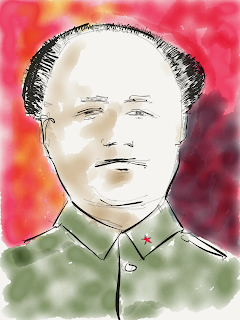Drawing a human head
Heads are round, right? We'll, sort of - but more like intersecting elipses.
Here's a plain round head. 😕 and here's what it's based on...
So, that's a more complicated idea and we need to break it down. Let's start by thinking about the basic proportions. from the front If we go back to the round head idea for a second, change the round shape to an oval 3 high x 2 wide
heres' my egg head!
From the side, we can abstract that complicated skull shape into 2 ovals, a vertical one and a horizontal one, about the same size... the drawing below is from "Drawing the Human Head".
Here's my take on the 2 oval profile view (drawn with Paper 53 on an iPad)
We can start looking at the "facial mass" as distinct from the "cranial mass"
And for fun, start to manipulate the facial and cranial masses to render more complicated angles. This is where it starts getting tough!
up views and down views
I'm going to keep working on the "masses" before I tackle detailed rendering of features like eyes, noses, chins, hair etc. Let me know how you make out!


































